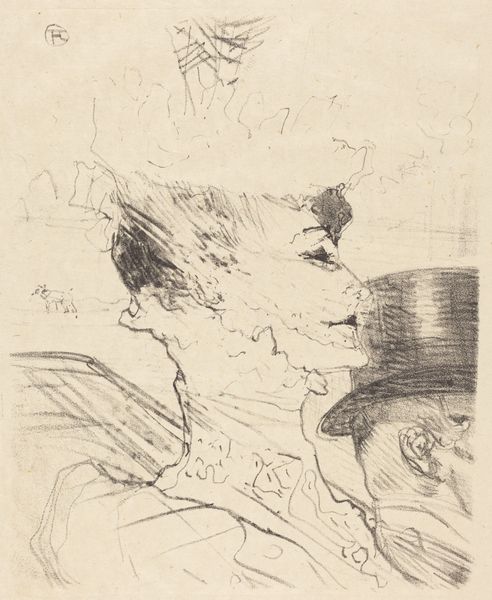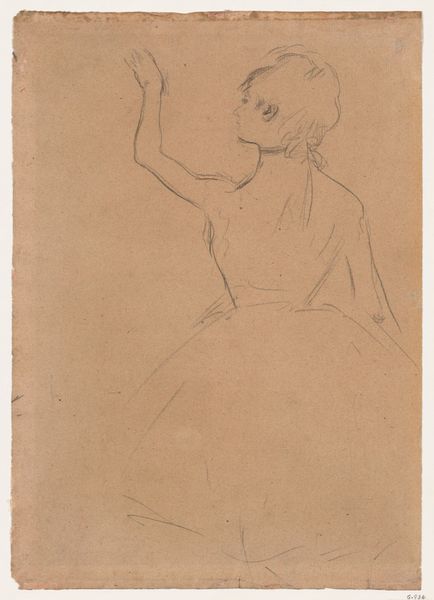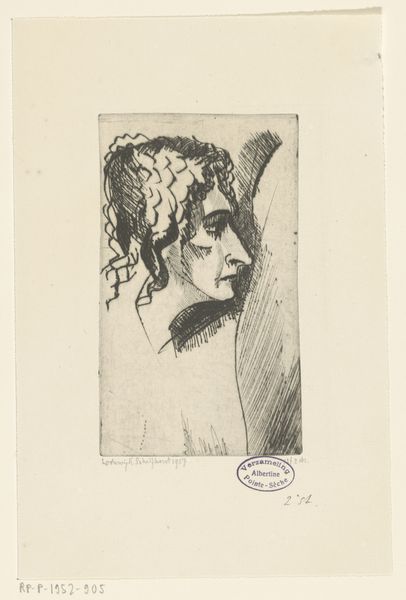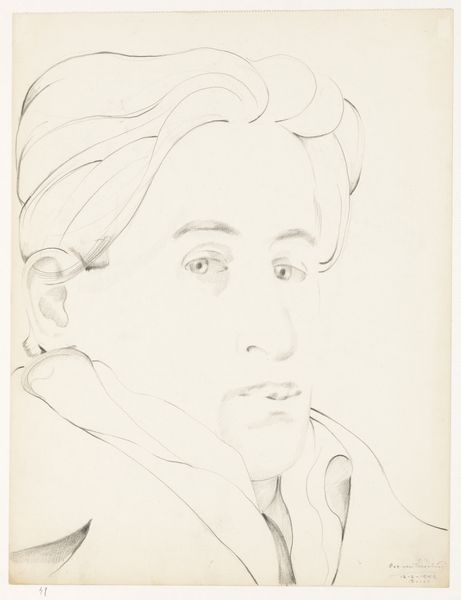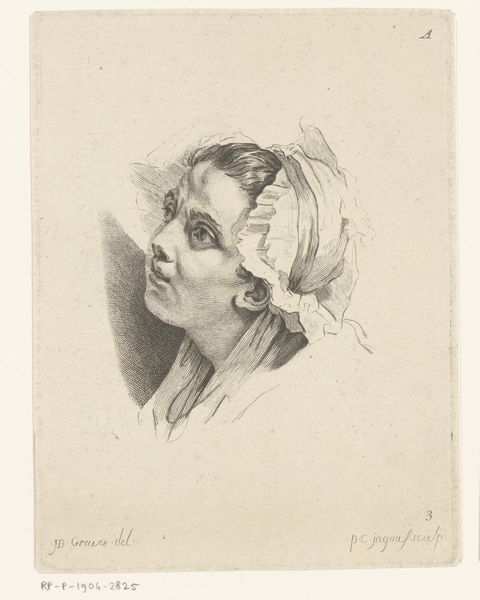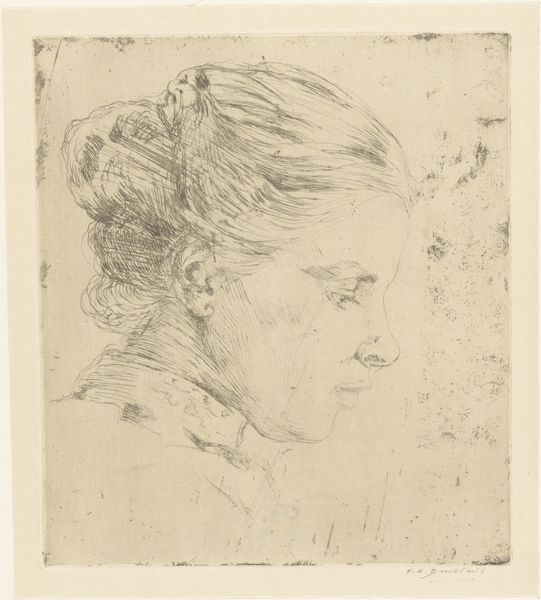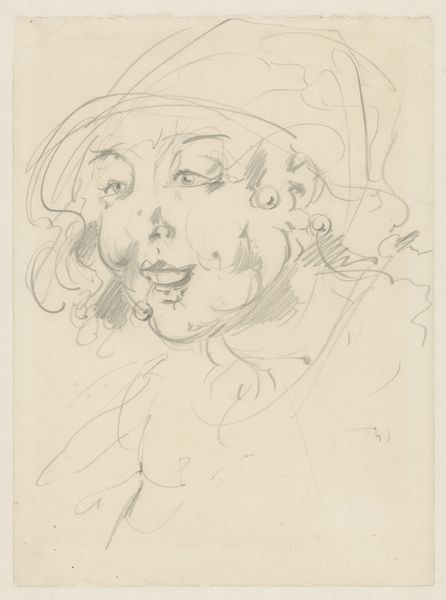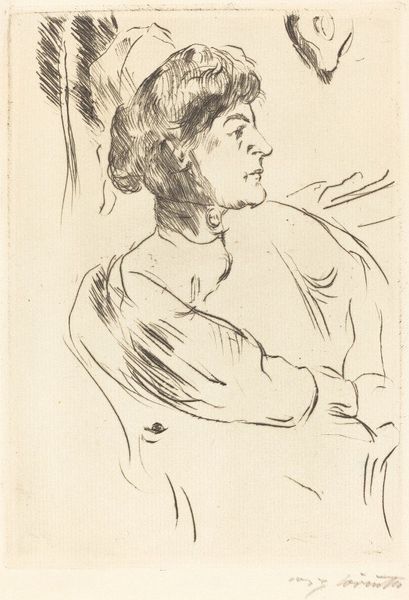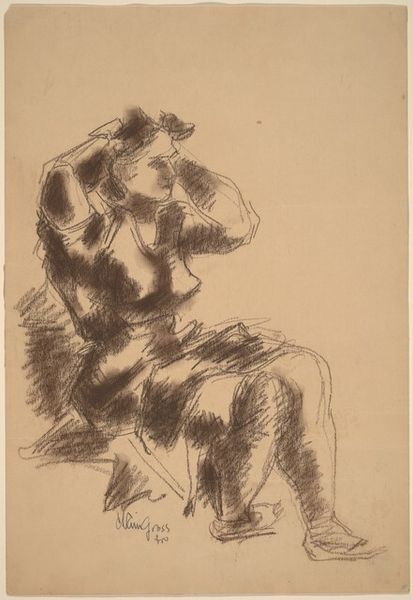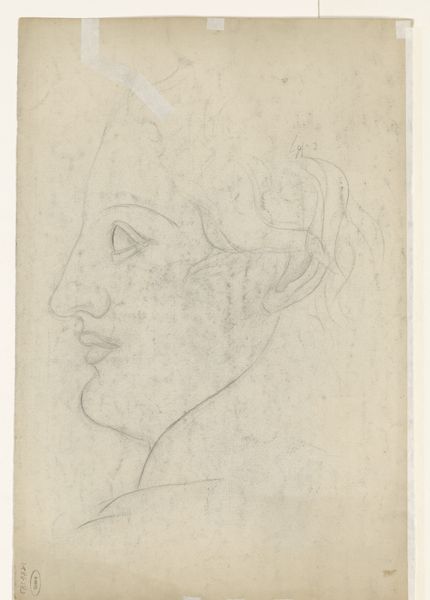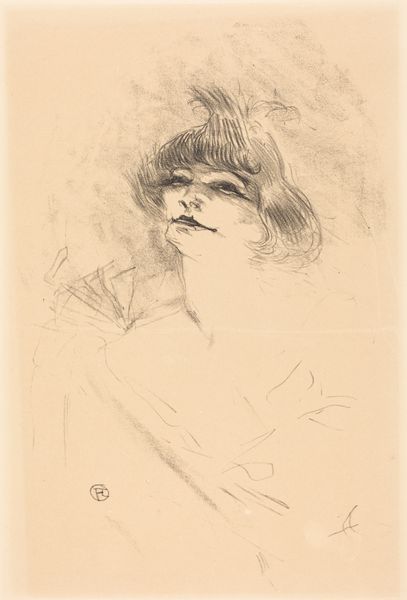
print, etching
#
portrait
# print
#
etching
#
figuration
#
realism
Dimensions: plate: 17.5 x 12.9 cm (6 7/8 x 5 1/16 in.) sheet: 19.2 x 13.6 cm (7 9/16 x 5 3/8 in.)
Copyright: National Gallery of Art: CC0 1.0
Curator: There's an intriguing quietude about this work, isn't there? Editor: Absolutely. It's delicate but intense. What are we looking at? Curator: This is "Reflections", an etching by Julian Alden Weir, likely created between 1885 and 1893. It's a remarkable example of his skill as a printmaker. You see the subject, head resting thoughtfully on their hand, gaze directed somewhere beyond the frame? Editor: Yes, the soft hatching technique… it really invites introspection. It reminds me a bit of the printmaking revival happening then, with artists seeking alternatives to industrial image production. Were etchings common subject to debates surrounding craft and commercialism at the time? Curator: Certainly. The etching process itself speaks to a conscious rejection of mass production. Each print required careful, manual labor, and inherently offered unique variations. Etchings allowed artists to sidestep larger institutional debates. The relative affordability also opened access to art for a wider audience, complicating the established patronage networks of the art world. Editor: And what about Weir’s choice of subject? What kind of status would a portrait in etching confer on the sitter or Weir's place within society? Curator: Weir often depicted close friends and family, which lent an intimate, personal feel. By focusing on personal relationships, this portrait could reflect the growing desire of some Americans to escape a society characterized by corruption in urban centers and an ever increasing gap in the distribution of wealth, into simpler domestic lives. Furthermore, Weir was experimenting with impressionist ideas at the time, thus etching a path beyond the then dominating Hudson River School's commercial style. Editor: Fascinating. It really is an intersection of technique, subject, and the social currents of the era. You notice the slight imperfections, the unevenness of the ink. Curator: Indeed. It reinforces the idea that it is an object made by human hands, meant for thoughtful observation. A reminder that even the quietest works can speak volumes about their time. Editor: Exactly. Thinking about its placement here today also enriches how it operates. Let’s make sure to consider these threads as our visitors continue through the gallery.
Comments
No comments
Be the first to comment and join the conversation on the ultimate creative platform.

